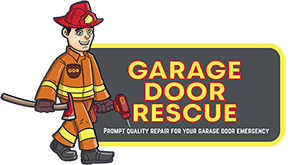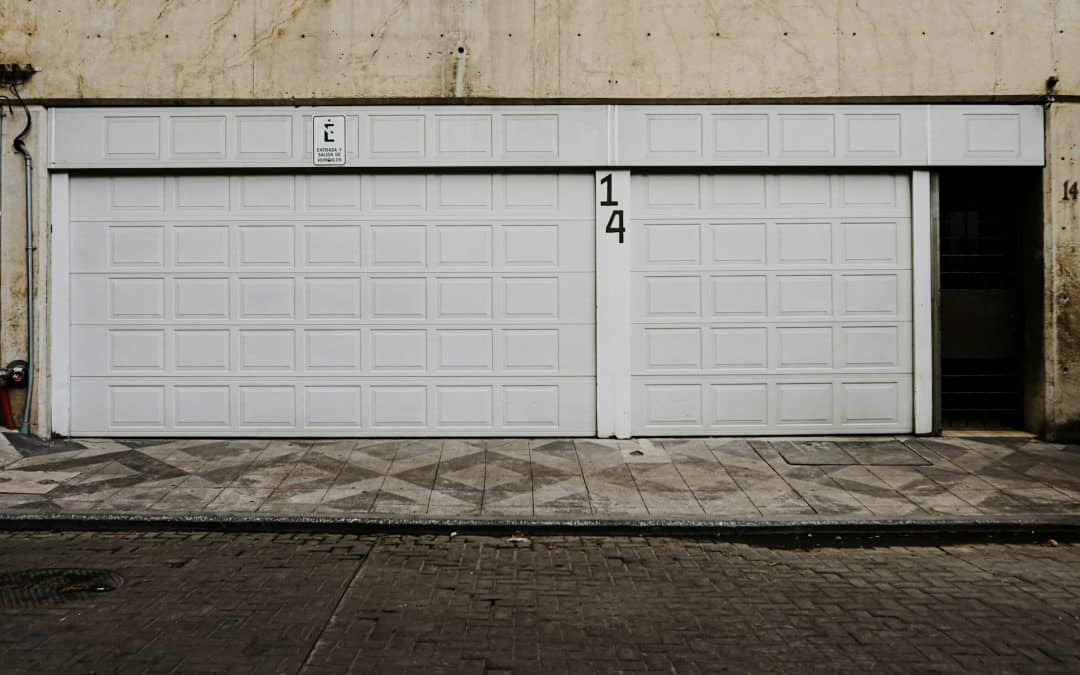An uneven garage door may seem like a small annoyance, but it can lead to bigger problems if left unchecked. Whether it tips slightly to one side or looks crooked when opening, these issues usually point to a deeper mechanical problem. If it’s tough to open or close, or if you hear strange grinding sounds, there’s a good chance something’s not working how it should. A smooth, balanced door isn’t just about looks—it’s about function and safety too.
When your garage door isn’t moving evenly, it can wear out parts much faster than usual. Uneven movement adds stress to tracks, hinges, and your garage door opener. That strain builds up over time and increases the risk of a full system breakdown. If the issue sticks around too long, it might even trap your car inside or out. Spotting the warning signs and acting early can help you avoid expensive repairs or replacements.
Common Causes Of Uneven Garage Doors
Garage doors might seem simple from the outside, but many parts have to work together for one to open and close smoothly. When something feels off, one or more components may be out of sync. Here are some of the most common reasons your garage door might be operating unevenly:
– Worn-out springs: Springs need to support the door’s weight. If one spring wears out or snaps, the door can dip to one side since it’s no longer balanced.
– Misaligned tracks: The metal tracks guide the door as it moves. If one track is bent or pulls away from the wall, it can throw off the door’s movement.
– Loose or damaged cables: Cables help lift and lower the door. A cable that slips from its drum or becomes frayed can make the door lean or tilt during operation.
– Roller issues: If a roller pops out or becomes stuck, certain parts of the door may move slower or not at all.
– Settling and shifting frames: Over time, homes settle. Tiny shifts in your garage frame can affect the alignment of your garage door, especially if it was never readjusted.
Let’s say you notice your garage door crunching as it opens or lowering more on one side than the other. That could be a signal that a cable has snapped or a spring has lost its strength. Catching these issues early matters, since ignoring them can cause more damage as time goes on.
Signs Your Garage Door Needs Repair
Garage doors are heavy and under constant tension. When something’s wrong, the signs aren’t always subtle. Paying attention to small changes in how your door behaves can help you spot problems before they get worse.
Look out for these red flags:
1. It looks crooked while moving: One end rises faster than the other or hangs lower when closed.
2. Unusual sounds: Grinding, banging, or scraping noises when the door moves.
3. Slow or jerky motion: Instead of a smooth glide, the door stutters or lags partway through opening or closing.
4. Door slams shut or struggles to stay open: This usually means spring tension is off or cables are slipping.
5. Gaps beneath the door: When the garage door closes, light coming through on one side can show that it’s not sealing correctly.
It’s easy to overlook these issues when you’re in a rush. But taking five minutes to inspect what’s going on can keep your door in better shape long term. Some problems may seem small at first but can grow quickly if ignored. For safety and peace of mind, it’s a good idea to bring in a trained set of eyes once any of these warning signs show up.
Steps To Diagnose The Problem
When a garage door acts up, a little detective work can help you pinpoint where things went wrong. Diagnosing the issue may not solve it immediately, but it offers insight into what needs fixing.
Here’s a simple guide to assess the situation:
1. Visual inspection: Start by watching the garage door as it opens and closes. Notice any tilting or unusual movement. Check for visible gaps between the door and the ground.
2. Listen closely: Pay attention to the sounds it makes during operation. Grinding or scraping noises often mean there’s friction somewhere, potentially due to misaligned tracks or worn-out parts.
3. Examine the springs and cables: Visually inspect the springs above the door and the cables running along the sides. Look out for signs of wear or damage, such as fraying or rust.
4. Check the tracks: Look for bends, debris, or misalignment in the tracks on either side of the door. Make sure the tracks are secure and not wiggly.
5. Test the balance: Disconnect the automatic opener and try lifting the door manually. It should lift smoothly and stay open. If it feels heavy or difficult to move, there might be an issue with the springs or balance.
Taking these steps might not fix the problem, but it gives you a clear idea of what you might be up against. Once you have a handle on what’s wrong, contacting a professional becomes much easier.
Professional Solutions For Fixing Uneven Garage Doors
Once you’ve narrowed down the potential issues, turning to professional help can ensure the work gets done right. Professionals have the tools and experience to handle the complexities of garage door repairs safely and efficiently.
Common professional solutions include:
– Spring adjustment or replacement: If the springs have worn out, technicians can adjust tension or replace them altogether.
– Track realignment or repairs: Tracks may need straightening or replacement if they’ve sustained significant damage.
– Cable replacement: Professionals can replace snapped or frayed cables to restore the door’s proper operation.
– Roller replacement: Swapping out damaged rollers can help the door move smoothly again without catching or making noise.
– Frame adjustments: If home settling causes issues, experts can make adjustments to ensure the door fits the frame perfectly.
Professional assistance not only takes away the burden of repair work but also ensures the safety of everyone involved. Handling some of these repairs yourself might risk injury due to the tension and weight involved.
Keeping Your Garage Door Balanced
Maintaining a balanced door requires ongoing attention. Here are some tips to keep it operating smoothly:
– Regular checks: Perform visual and auditory checks every few months.
– Lubrication: Apply garage door lubricant on hinges, rollers, and tracks to reduce friction.
– Clean tracks: Regularly remove debris or dirt from the tracks to prevent obstruction.
– Tighten hardware: Check for loose bolts and nuts, tightening them as needed.
– Schedule professional maintenance: Consider annual check-ups by professionals to make sure potential problems are caught early.
A little care goes a long way in prolonging the life of your garage door and helping to avoid unexpected and costly repairs down the line.
Keep Your Garage Door Operating Smoothly
Uneven garage doors can become more than an inconvenience if left unaddressed. By understanding causes and signs, doing a little investigating, and reaching out for professional service when needed, you can prevent major complications down the road. Staying on top of routine maintenance, being aware of early warning signals, and knowing when to call in the pros are all smart ways to keep your garage door working safely and properly for years to come.
Maintaining the health of your garage door is key to preventing inconvenient and costly problems. Understanding the causes and catching early signs of issues can save time and stress in the long run. For those in the Fort Worth and Dallas area who notice their garage door isn’t operating as it should, seeking professional help is a wise step. At Garage Door Rescue, we offer comprehensive solutions to ensure everything runs smoothly. If you need help assessing and fixing your garage door, explore our services for reliable garage door repairs that get the job done right.

